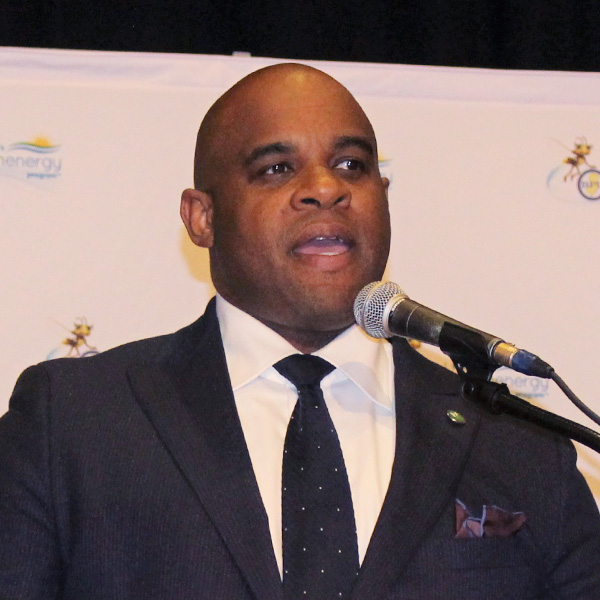Virginia Gov. Glenn Youngkin (R) on Monday released an energy plan that focuses on developing still-untested carbon-free resources while calling into question the ability of current renewable technology to make up for lost capacity as the state shifts away from fossil fuels.
In a letter announcing the plan, Youngkin wrote that previous plans for the transition to cleaner energy were too rigid and followed an “either/or” mindset, whereas his plan seeks a “both/and” approach of expanding solar and wind while investing in other emerging technologies.
“In fact, the only way to confidently move towards a reliable, affordable and clean energy future in Virginia is to go all-in on innovation in nuclear, carbon capture and new technology like hydrogen generation, along with building on our leadership in offshore wind and solar,” he wrote.
While the plan lacks the power of law, it seeks to provide a framework for future policymaking through an assessment of the current state of the energy environment and a series of recommendations for each of its guiding principles: affordability, reliability, competition, innovation and environmental stewardship.
Some of the plan’s recommendations direct state agencies to complete studies on potential reforms, such as addressing cost overruns in utility infrastructure projects, although most of the proposals would require action from the General Assembly.
Democrats, who control the state Senate, are likely to oppose Youngkin’s efforts to roll back the previous administration’s policies.
The plan takes an especially strong stance on creating a hub of nuclear development in southwest Virginia, drawing on expertise fostered at the Norfolk Naval Base, where the nation’s fleet of nuclear submarines and carriers are maintained. It calls for a collaboration with government, industry and academic partners to work toward the deployment of a commercial small modular nuclear reactor within the next 10 years.
The “all of the above” approach detailed in the plan also promotes investments in developing carbon capture, utilization and storage technologies to lower the emissions of existing fossil fuel generation and industries, while building new industries in battery production and renewable energy, particularly the $9.8 billion Coastal Virginia Offshore Wind project.
Proven Technology
The plan received support from a broad coalition of business associations and energy companies who said it provides for affordable power while working toward a cleaner environment.
“Affordable, reliable, sustainable and secure energy from a diversity of resources is a necessity for Virginia’s economic competitiveness,” Virginia Manufacturers Association CEO Brett Vassey said. “The VMA is thankful that Gov. Youngkin’s energy plan recognizes that affordability and environmental responsibility are not mutually exclusive public priorities.”
The plan takes aim at actions undertaken during the administration of Youngkin’s Democratic predecessor, Ralph Northam, including passage of the Virginia Clean Economy Act (VCEA) of 2020 and the Clean Cars Virginia bill, which ties the state to California’s requirement that only zero-emission vehicles be sold after 2035, as well as participation in the Regional Greenhouse Gas Initiative.
The governor’s plan says that transitioning all new vehicle sales to EVs would eliminate consumer choice and strain the electric grid, particularly if done while the state is transforming the generation environment.
Kim Jemaine, policy director with Advanced Energy Economy, expressed surprise that Youngkin’s plan called for reauthorizing the VCEA every five years, contending that the law shares many of the same goals as his energy plan and a path toward achieving those goals through technological investments while also expanding proven and developable clean energy.
“Gov. Youngkin’s objectives of reliability, affordability, innovation, competition and environmental stewardship are all achievable within the framework of the VCEA. It’s unfortunate that the 2022 Energy Plan spends so much time disparaging the VCEA when that law offers a clear path to achieving the administration’s purported goals,” Jemaine said in a statement.
Requiring the law to be reauthorized regularly would also make it more difficult for businesses to plan for the future, particularly those which have made clean energy pledges, Jemaine said.
By remaining a party to RGGI and holding onto the clean cars standards, Virginia would also provide for an energy sector that is cost-effective, reliable and focused on environmental stewardship in a manner that aligns with Youngkin’s energy goals, she said.
“RGGI is helping Virginia transition towards a clean grid while strengthening our flood resilience and cutting Virginians’ electric bills with energy efficiency. The Clean Cars standards help ensure Virginia is a leading state in transportation electrification, encouraging innovation, cutting tailpipe emissions, and reducing our reliance on costly, imported oil,” she said.
Jemaine told RTO Insider that she sees some bright spots in the plan, including an emphasis on expanded offshore wind, increased competitive bidding by independent power producers and investments in future technology innovation — though she said that cannot come at the cost of also investing in proven clean energy today.
“What the energy plan does is it really emphasizes emerging technology like nuclear and hydrogen, and that’s fine, because those technologies may have a space in the future … in the meantime we have to invest in technologies that we already know to ensure that the grid is more stable, reliable and cost effective,” she said.






